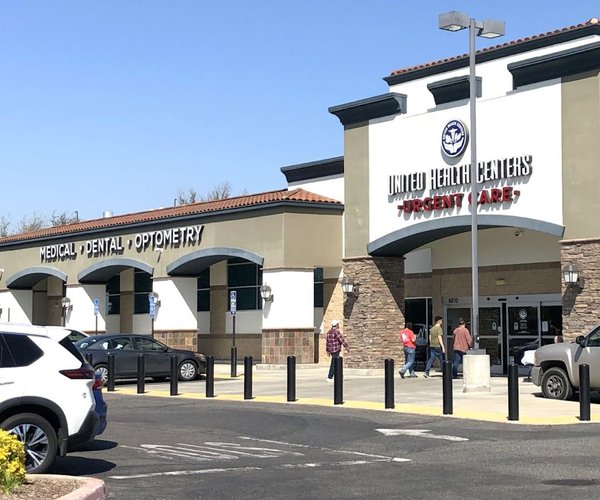Residential growth to the northwest of Highway 99 is still on the table for the City of Turlock, following a split Turlock City Council decision Tuesday night.
The decision, supported by Turlock Mayor John Lazar and Council members Amy Bublak and Bill DeHart, will see Turlock continue forward with the previously-adopted preferred land use plan in the ongoing General Plan update process. That plan would see Turlock first grow immediately southeast of the current city limits, then, once that area is 70 percent developed, potentially move northwest.
The preferred land use plan would accommodate about 18,000 new homes in total, bringing Turlock to 125,000 total residents. Full build out would take at least 20 years, and likely more in today’s economic climate; Turlock has built just under 120 homes in the past two years.
The preferred growth plan has been in place since an Aug. 23, 2010 council meeting. But, during a March 1 special joint meeting of the Planning Commission and the City Council, the Planning Commission Chair Mike Brem questioned the wisdom of growing west of Hwy. 99.
“I’m still not sold on the primary alternative, including the northwest,” Brem said at that time. “I’m not sure that, even though that’s been the direction from the City Council and I respect that, I don’t believe that that’s the will of the people of Turlock to have residential development (west of 99).”
The planning commission had previously expressed its unanimous opposition to growth northwest of 99, but the commission’s direction was ignored in the initial, Aug. 23, 2010 City Council decision. The commission at that time said that staying east of 99 would save valuable farmland, and would promote compact, efficient growth and infill in the City of Turlock – values lauded in the general plan, and by numerous members of the public at forums to scope the general plan.
While the planning commission remained united in their support of southeast-only growth Tuesday night, the costs of revising the plan – approximately $40,000 – led three of the commissioners to question whether the change was fiscally prudent.
The cost drew Bublak, DeHart and Lazar’s opposition to revising the plan. Bublak asked how the council could ask for concessions from employees after spending $40,000 on the change.
“I can’t justify spending $40,000 right now either,” Lazar said. “Even though it’s redevelopment money, that’s equivalent to someone’s salary.”
But to White and Jackson, who supported the change, drawing a line in the sand opposing growth west of 99 would have been worth the cost. White referenced the decision 20 years ago to make Taylor Road Turlock’s northern boundary, while Jackson spoke of the need to develop south Turlock.
“If we do not develop the southern part of our community, it’s going to be South Modesto for the rest of my life, and I’m a pretty young person I think,” Jackson said. “... It’s opening Pandora’s Box for housing in the northwest. I’d rather spend the $40,000 now than spend more than that.”
The preferred land use plan, as accepted, could yet change. The decision will only govern the General Plan document through the initial California Environmental Quality Act process.
Through environmental review, the general plan update process will examine two alternatives – growing only to the extent the southeast is capable of holding, and growing only to fill about 60 percent of the southeast, beyond which growth would trigger the need for a new, costly highway interchange. Neither alternative would see Turlock grow northwest.
Numerous public meetings will be held over the next year to discuss the plans, and input at those meetings will affect the final general plan. The council may adopt any alternative at the close of the environmental review, in approximately one year, though the changes would cost an additional $40,000-plus, roughly on par with the costs of changing the preferred land use plan today.
“Bottom line, what we’re looking at tonight as a possibility, could be the same possibility in seven or 10 months,” White said.
“No choice has been made really,” Lazar said. “This process is moving forward.”
Attorney questions Brown Act violations, funding mechanism
Richard Mowery, an attorney from outside of Turlock, addressed the council Tuesday night with concerns over the process leading to Tuesday’s special meeting.
Mowery questioned whether an impromptu conversation on altering the proposed land use plan at the March 1 joint meeting possibly violated the Brown Act, as the item was not agendized.
City Attorney Phaedra Norton said that she acted appropriately in advising the council and commission that the item was not on the agenda, and delayed the discussion until Tuesday’s special meeting, so the public could attend and speak on the item.
Mowery also asked if two documents contained within Tuesday’s council packet were indicative of Brown Act violations. A February quote – before council met and the idea of altering the preferred land use plan was discussed— stated that Omni-Means, a planner on the project, would evaluate a new plan “based on direction from City Council.”
“Maybe there’s a mistake and it bears investigating, but this implies some members of the City Council issued a directive to have this work done,” Mowery said.
Turlock Deputy Development Services Director Debbie Whitmore said the Omni-Means report was prepared at her direction, in response to an anticipated question, and did not reflect the will of the City Council.
“I wanted to have this strictly for my information should I be asked that question,” Whitmore said. “It was not at the direction of the City Council at all.”
Lastly, Mowery questioned whether the city’s plan to fund the general plan revisions through redevelopment agency dollars was appropriate. Mowery said laws require the redevelopment agency to conform to the general plan, not the other way around, and redevelopment agencies may not pay for the modification of general plans under any circumstances.
Norton said the goals of the Turlock RDA include planning, development and replanning, and that the expenditure would have been legally acceptable.
“We anticipated this question as well,” Norton said. “We double checked with outside counsel, they said it was an appropriate use of the funds.”
The point became moot, regardless, as the council voted against expending the funds.
To contact Alex Cantatore, e-mail acantatore@turlockjournal.com or call 634-9141 ext. 2005.









